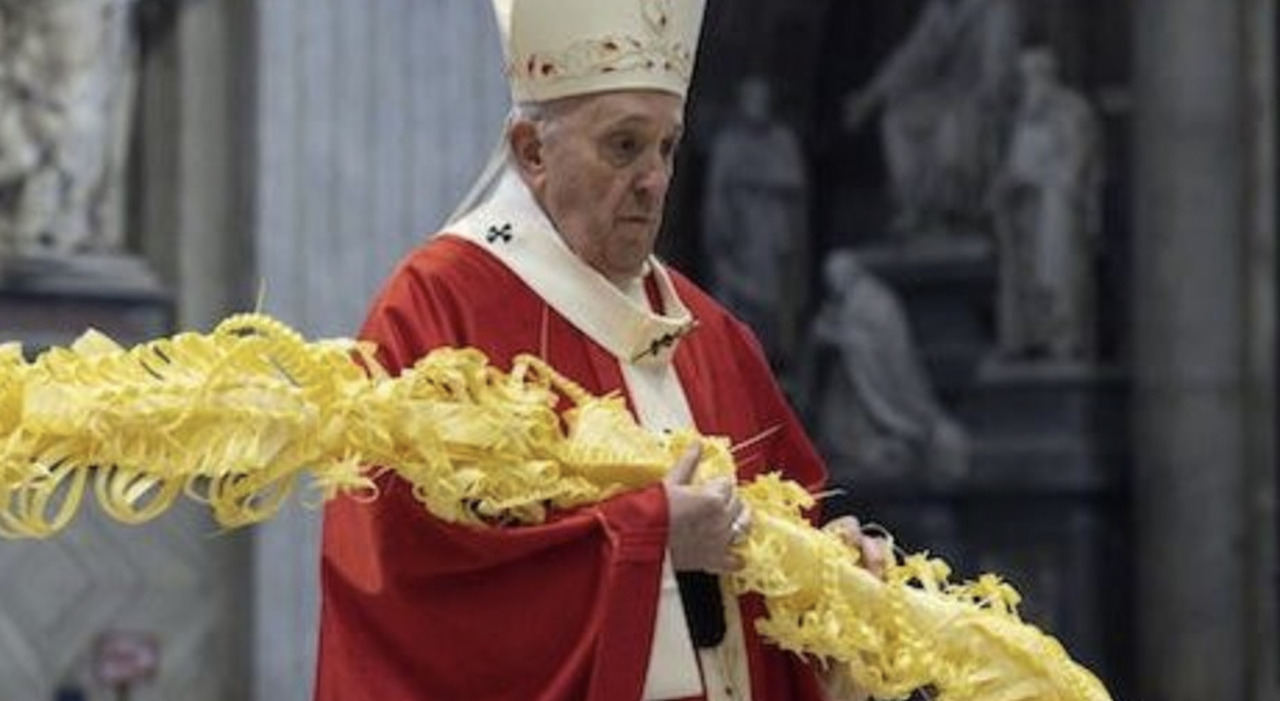Friday 22 March 2024, 16:29 - Last updated: 25 March, 12:41
Since 1586, from the time of Pope Sixtus V, the very ancient (and little-known) tradition of donating the “Parmureli” to the Vatican is punctually renewed every Palm Sunday at St. Peter's. These are palm branches woven according to a highly complex method and jealously guarded by the city of Sanremo. This Ligurian town has the centuries-old privilege of supplying these symbols for the papal mass, which refer back to Jesus' triumphant entry into Jerusalem. The tallest branch, woven like an arabesque, is destined for Francis and is the tallest of all, almost two meters, those of the cardinals who will celebrate the rite with him on Sunday a little lower. “The work behind it is huge. To make one takes almost a day's work: it involves skillfully weaving each tuft without using any stapling, simply by knotting them together, as if it were the warp of a fabric. The result is like a sort of embroidery developed horizontally,” explain Leo Pippione and Francesco Rilla, president and member of the Famijia Sanremasca, the association founded to preserve the history, traditions, art, and culture of the Ligurian area.
Every year a few days before Palm Sunday, a van leaves Sanremo with the precious “Parmureli” destined for the Pope. “The weavers are artisan floriculturists, mostly women who pass down this art. But first, the Parmureli must be properly prepared. The leaf of the young palm must be kept in the dark to remain yellow for several days, and then it is woven by hand, slowly, according to a precise sequence. The name Parmureli in Ligurian dialect means young palm leaf.”
The centuries-old tradition of entrusting Sanremo with this task stems from a curious episode. Sixtus V gave the task to Domenico Fontana of repositioning in St. Peter's Square the obelisk that at the time was located next to the basilica. Since the operations for the transfer were very delicate and with the risk of breaking the obelisk, the pope imposed silence on the crowd of onlookers, threatening the death penalty to anyone who disturbed the workers engaged in that task. At a certain point, however, in a delicate moment of the erection of the heavy monolith, just when the ropes were stretched to the maximum, someone shouted in Ligurian dialect: water on the ropes! Breaking the silence and disobeying the papal orders was the Sanremo native Benedetto Bresca, a captain who, as an experienced sailor, understood ropes and knew that ropes too dry and too tense could fray and break, causing the obelisk to collapse. The instruction to wet the ropes was providential and contributed to the success of the operation. Bresca was nevertheless arrested but when it was feared that his intervention had been salvific, he was “pardoned.” Thus, they brought him before Sixtus V, who asked him to choose a reward. He asked for and obtained the privilege for himself and his descendants to supply the Vatican with palm leaves for the Holy Week celebrations. The Pope also handed him the papal banner to hoist on the mainmast of his ships to guarantee him precedence at the entrance to the port of Ostia and during transport along the Tiber.
The Palm Sunday mass will be presided over by Francis at 10 am along with the cardinals and bishops. With this rite, we enter the so-called Holy Week, which culminates with Easter. On March 28, Holy Thursday, the Pope will celebrate at 9:30 am the Mass of the Chrism, on the day when priests renew their promises. Good Friday will see the usual double appointment with the celebration of the Passion of the Lord at 5 pm in St. Peter's and then at 9:15 pm the rite of the Via Crucis among the torches of the faithful and the arches of the Colosseum. Then, on the evening of March 30, Holy Saturday, at 7:30 pm, the Vigil presided over by Francis and at 10 am the Easter Mass and at 12 pm from the central Loggia of the Basilica the Urbi et Orbi Blessing.
© ALL RIGHTS RESERVED
This article is automatically translated
